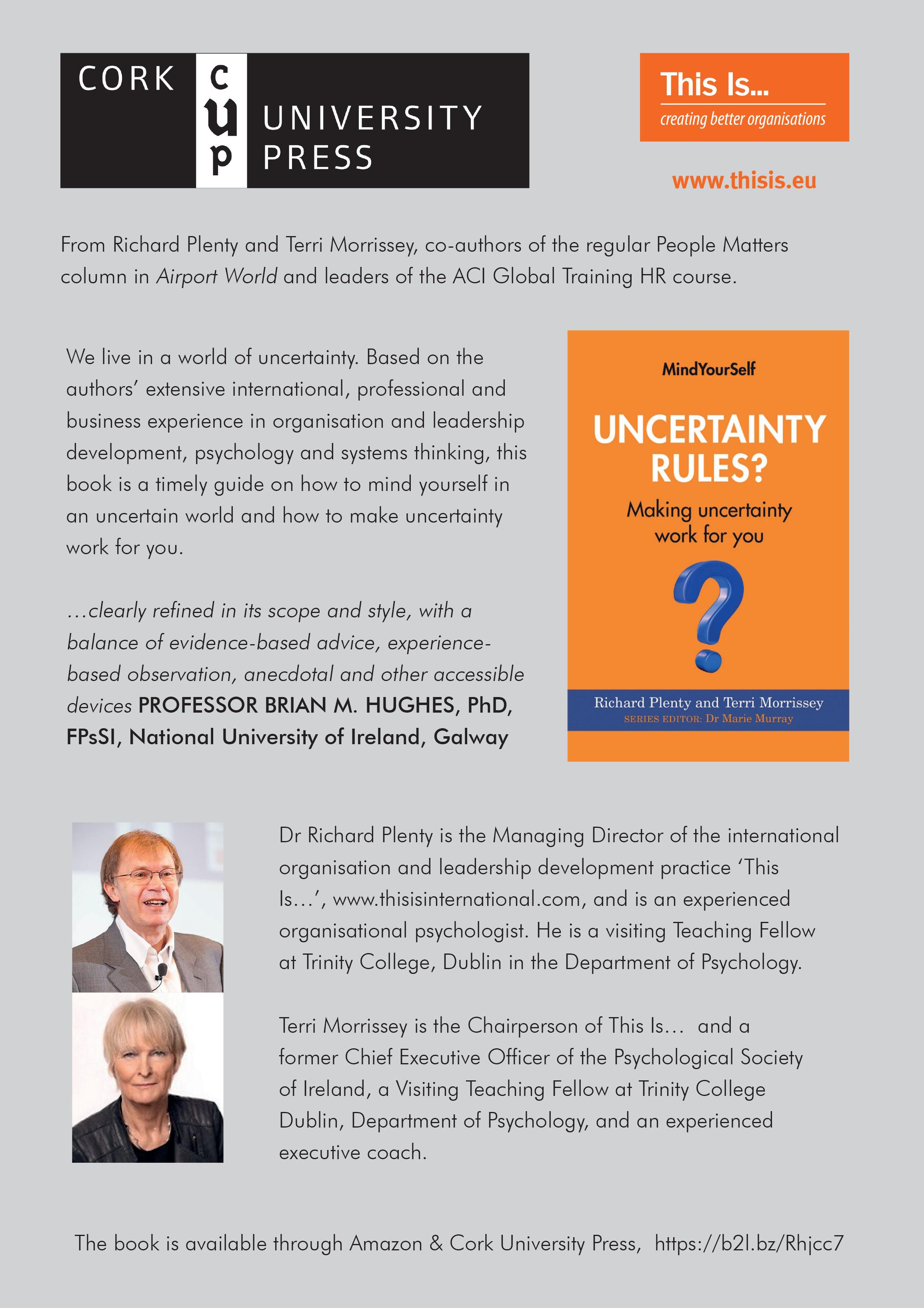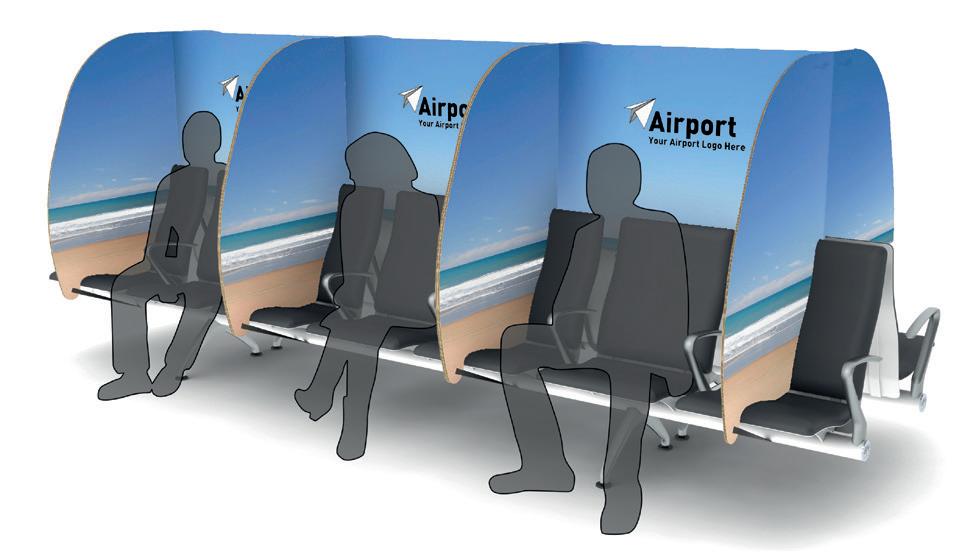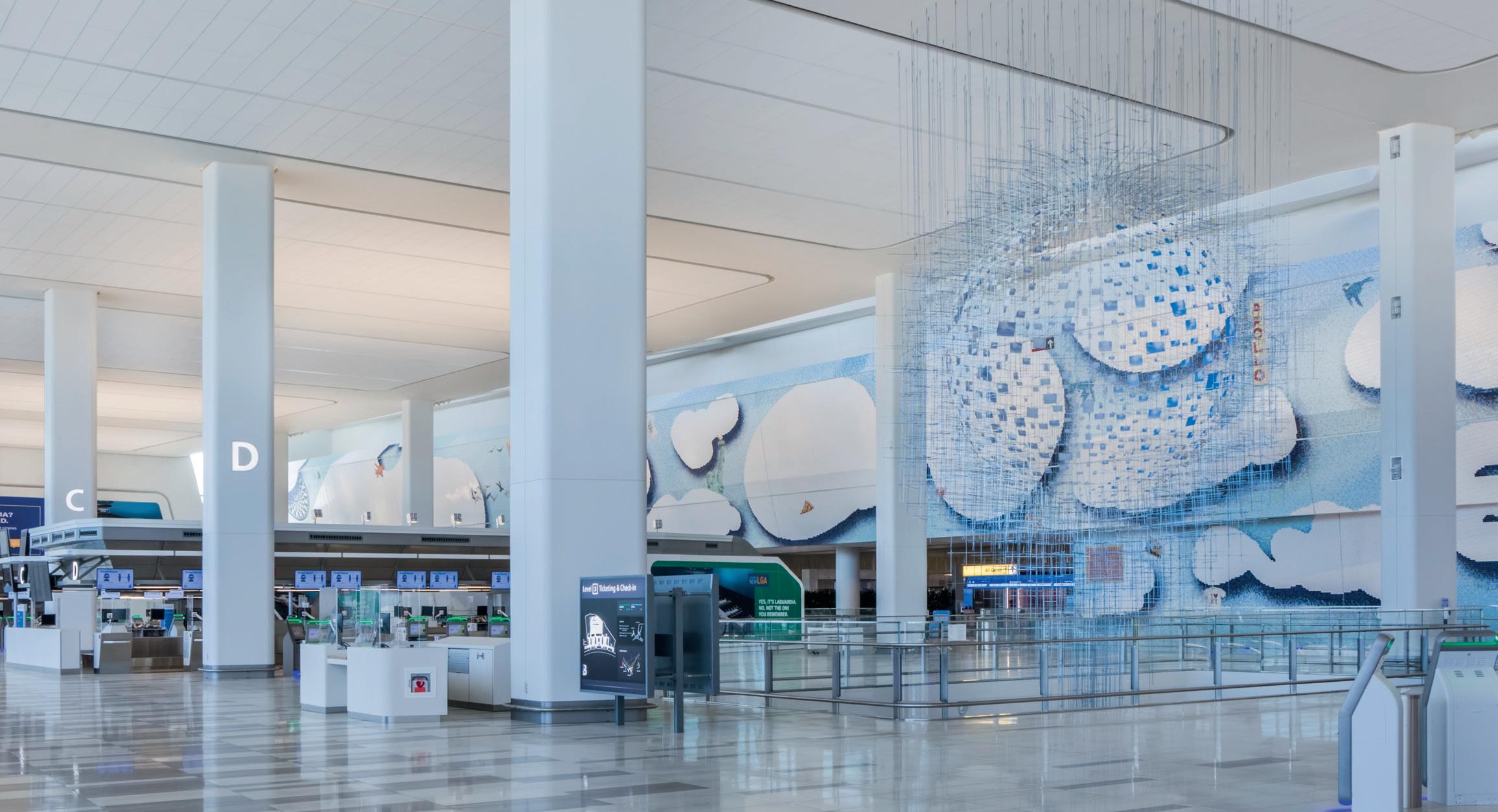
7 minute read
Growing the business
MXD’s Chris LeTourneur explores growth opportunities for e-commerce, health and food logistics in the wake of COVID-19.
The COVID-19 pandemic has had devasting impacts on every aspect of how we live, work, play, socialise and move around, with aviation being one of the hardest hit sectors as passenger numbers have plummeted.
Advertisement
The decline has led to a steep downturn in commercial revenues, particularly with regards to terminal retail and F&B concessions, parking, rental cars, airport hotels and conference facilities.
However, it is not all negative as airports continue to come up with new ways of developing their property to diversify their revenue streams and decrease their dependency on traditional passenger related income. And increasingly they involve the development of facilities for e-commerce, health and food logistics.
But before we review what some airports are doing, let’s reflect on some of the impacts COVID-19 has had on off-airport real estate across the globe.
Changing nature of offices and workspace
Where we work has dramatically changed in response to the COVID-19 pandemic. Whereas the past decade was about increasing office density with open collaborative space concepts in downtown areas, the ‘new normal’ involves a hybrid of working from home and desires for less dense office space, as found in suburban business parks.
Business Insider reports that several tech companies, including Google and Facebook, have limited their office capacity to 30% and firms including Twitter, Shopify and Spotify are now allowing their employees to work from home permanently.
According to USA Today, office vacancy rates in the USA are forecast to rise to 20% by the end of 2020, and in dense cities such as New York office rents have fallen 20% in 2020. An ABC News survey suggests that seven out of 10 employees fear returning to their workplace until a COVID-19 vaccine has been established.
Decline of retail stores and e-commerce growth
COVID-19 has had significant impacts for retail stores and restaurants. According to the New York Times, analysts predict 25% of the USA’s traditional malls will close in the next five years, a trend that has been accelerated by COVID-19.
Overall total retail sales in the USA will drop by 10.5% in 2020 with retail store sales down 14%. In the wake of COVID-19, retailers have had to adapt to the new normal, which has meant growing their online sales platforms.
In the USA, Walmart has leveraged its online grocery sales to compete with Amazon. Walmart expects a 35% online sales jump in 2020. And according to Tech Crunch, e-commerce sales in the USA will increase by 18% in 2020, predominantly due to COVID-19.
Growth of e-commerce, health and food logistics at airports
The COVID-19 pandemic has resulted in the acceleration of logistics demands for e-commerce, health items, personal protective equipment (PPE) and perishable foods.
E-commerce
As a result of COVID-19, DHL Express will add 400 new jobs in the USA to address the spike in online shopping and demand for urgent shipments of medical and PPE.
DHL Express’ Americas Hub at Cincinnati/Northern Kentucky International Airport (CVG) has seen a 30% year-over-year increase in shipment volumes. Elsewhere, its gateway facilities at Chicago O’Hare and Miami International Airport have seen volumes increase 25% and 22% respectively.
The evolving Amazon Prime Air Hub at Cincinnati/Northern Kentucky International Airport has been very timely with the growth in e-commerce resulting from the COVID-19 pandemic. This $1.5 billion project at CVG has the capacity to handle 100 aircraft and up to 200 flights per day, accelerating Amazon Prime’s service delivery time from two days to one.
Health logistics
in April 2020, UPS Healthcare opened its new 450,000sqft Healthcare Distribution Center at Louisville Muhammad Ali International Airport (SDF), adjacent to the UPS Worldport.
This facility features dedicated space for the Federal Emergency Management Agency’s (FEMA’s) ‘Project Airbridge’, a public-private partnership aiming to transport life-saving equipment including test kits, PPE, ventilators, ICU monitoring units and medical devices, as well as time and temperature sensitive pharmaceutical supplies to hospitals and markets around the globe, processing over 72 million units in response to the pandemic.
In June 2020, airport cargo weight volume increased by 8% year-over-year at Memphis International Airport (MEM), due to increased e-commerce business through the FedEx hub.
Much of this increased volume was handled by FedEx Ground, with FedEx Express volume growth attributed to the movement of medical supplies and equipment by air.
When a COVID-19 vaccine is deployed, it will need to be maintained at 2 o C to 8 o C throughout the shipping process using temperature controlled secure logistics. Vaccines produced with newer technologies could require advanced freezers keeping temperatures below -80 o C.
The time sensitivity overnight delivery logistics and secured ecosystems of airports are reasons why airports are already weaving opportunities for vaccine distribution into their development strategies.
Winnipeg Richardson International Airport (YWG) in Manitoba, Canada, has already been a focal point for moving veterinary science and animal bio-materials, vaccines and medicines, taking advantage of its cold climate.
Food logistics
Demand for perishable foods has surged during COVID-19 due to lockdowns, meat plant infections, and logistics challenges. As well, demand patterns have shifted as restaurants have been closed.
DHL Australia reports its high-value perishable food shipments (including fruits, vegetables, meat, seafood and dairy products), 70% of which were destined for restaurants prior to COVID-19, have been re-allocated to meet rising grocery store demands.
At Houston’s George Bush Intercontinental Airport (IAH), during the COVID-19 pandemic, 1,200 United employee volunteers processed 2.2 million pounds of food for the Houston Food Bank through a pop-up distribution centre in one of United Airlines’ cargo facilities.
Different strokes
Below are a few examples of how airports are adapting to COVID-19 by temporarily changing the use of their real estate.
In the USA, the Parking Spot, with 37 parking locations at 22 airports, has diversified their portfolio to include storage for non-airport passenger vehicles such as tractor trailers and commercial vehicles.
Forbes reports that this diversified activity has helped to reposition Parking Spot’s revenues, with over one-third of revenues being generated by non-airport-related sources.
Meanwhile, XpressSpa is re-purposing some of its 46 locations as COVID-19 testing locations. Their first location was launched at New York-JFK and is being used to test 500 workers a day.
Various airports are re-purposing airport assets to target the local population base with ‘safe and socially distant’ entertainment activities.
To generate short-term revenues, for example, Vilnius International Airport in Lithuania has converted a portion of the terminal airside apron into an outdoor drive-in movie theatre called ‘Aero Kinas’, as most of Lithuania’s theaters have been closed during the COVID-19 pandemic.
At Cologne Bonn Airport in Germany, an empty parking lot has been re-utilised to exhibit 300 works of Art during COVID-19.
Logistics leading the way to recovery at ATL
Hartsfield-Jackson Atlanta International Airport (ATL), the world’s busiest airport, was severely affected by global travel restrictions and lockdowns in response to the COVID-19 pandemic.
During the initial weeks of the pandemic in March and April 2020, ATL’s daily passenger flows reduced by 97%, however, after an initial decline in cargo due to the loss of belly-hold shipments on passenger flights, freight volumes are now soaring due to the increase in freighter operations. The airport’s cargo operations currently support over 30,000 jobs in the state of Georgia.
As part of its cargo and logistics growth strategy, ATL made timely investments over the past year, with the launch of its new Cargo Community Digitization and Information System in November 2019 and the construction of its new ATL Air Cargo Terminal Building C.
As well, ATL is currently requesting bids to build an additional new ‘Modern Air Cargo Terminal Complex’ directly west of the existing Cargo Area. These investments will expedite the smooth transition of cargo, while diversifying ATL’s non-aeronautical revenues and growing the regional economy.
ATL’s ‘Digitization of Cargo’ technology has been a key element in ATL’s COVID-19 role of becoming a significant global, national and regional distribution point for PPE arriving by air. Freighter aircraft, including the giant Antonov-124 and re-purposed passenger aircraft have become regular flights passing through ATL.
Elliott Paige, ATL’s director of air service development, says: “With the USA Centers for Disease Control headquartered in the Atlanta Metropolitan Region and ATL’s investments in modernised cargo operations, ATL’s cargo facilities are well-positioned to play a critical role in the time-sensitive and secure logistics for moving vaccines, pharmaceuticals and bio-health products”.
Additionally, Amazon Prime Air now has four daily flights through ATL to handle the over 20% growth from March to May 2020 of e-commerce volume through ATL.
Outlook
Airports that have diversified their real estate development and incorporated logistics components have been agile in responding to COVID-19 by adapting to replace revenues lost from reduced airport passenger operations.
Distinct recovery and growth opportunities for airport real estate development and revenue replacement in the ‘COVID-19 New Normal’ era include:
• E-Commerce Logistics including ground-to-ground distribution
• Health and PPE Logistics
• Temperature Controlled Vaccine Distribution Centres
• On Airport COVID-19 Rapid Testing Stations and Laboratories
• Food and Perishables Distribution Centres.
• Pop-Up Entertainment and Cultural Exhibits.
• Re-Purposing of Parking Areas for Commercial Storage and Pop-Up Installations.
Airports are long-term investments. As demonstrated during past economic crises, airports will adapt and evolve to conquer the ‘COVID-19 New Normal’.
About the author
Chris LeTourneur is the president and CEO of MXD Development Strategists, which helps airports leverage their connectivity and real estate, for facilitating innovation and economic development.










